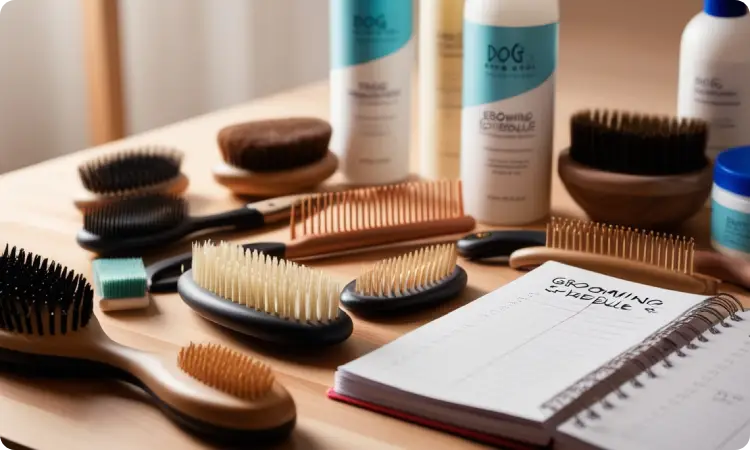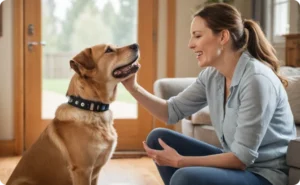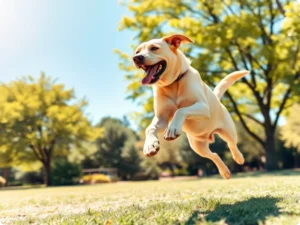Introduction
How often should a dog be groomed? This is a question many pet owners find themselves asking. Grooming is an essential part of dog care that goes beyond just aesthetic appearance. Regular grooming helps maintain your dog’s overall health, can prevent various skin conditions, and strengthens the bond between you and your furry friend. As every dog is unique, determining the right grooming frequency depends on several factors, including breed, coat type, and individual needs.
In this comprehensive guide, we’ll explore the importance of grooming, how often different breeds require grooming sessions, and tips for enhancing your dog’s grooming experience. Let’s dive deep into the world of canine grooming!
Understanding the Importance of Grooming
Benefits of Regular Grooming
- Health Checks: Regular grooming sessions allow you to examine your dog for signs of health issues, such as lumps, bumps, or skin irritations.
- Matting and Tangling Prevention: For dogs with long hair, frequent grooming can prevent painful matting and tangling, which can lead to skin infections.
- Shedding Control: Routine grooming reduces shedding around your home, allowing for a cleaner living environment.
- Improved Circulation: Brushing stimulates blood flow in the skin, promoting a healthier coat and skin.
Factors Influencing Grooming Frequency
Breed and Coat Type
Different breeds have varying grooming requirements. For instance:
- Short-Haired Breeds: Breeds like Beagles or Boxers may only need grooming every few months, requiring minimal brushing to manage shedding.
- Long-Haired Breeds: Breeds such as Shih Tzus and Collies need more frequent grooming, often weekly or even daily during shedding seasons.
Lifestyle and Environment
A dog’s lifestyle can influence grooming needs. Dogs that spend a lot of time outdoors may accumulate dirt or debris, necessitating more frequent baths and brushing. Conversely, an indoor dog may require less frequent grooming.
Age and Health
Older dogs or those with certain health conditions may also require more attentive grooming, as they may not groom themselves as efficiently. Puppies, too, may need more help as they learn the basics of grooming.
Grooming Frequency Based on Coat Type
Short-Coated Dogs
Short-haired breeds like Bulldogs and Dachshunds typically require less grooming. A good brush once a week is often sufficient to remove loose hairs and distribute skin oils evenly.
Medium-Coated Dogs
For medium-coated breeds such as Cocker Spaniels, grooming every 4 to 6 weeks is recommended. These dogs will benefit from regular brushing to prevent tangles and control shedding.
Long-Coated Dogs
Long-haired breeds, including Afghan Hounds and Maltese, require a more rigorous grooming routine. It’s advisable to groom these pets every 1 to 3 weeks, with daily brushing during heavy shedding periods.
Grooming Techniques and Tips
Choosing the Right Grooming Tools

Investing in the right grooming tools can make a significant difference in the experience for both you and your dog. Here’s a list of essential grooming equipment:
- Brushes: Select brushes that are suited to your dog’s coat type—slicker brushes and bristle brushes for long hair, and rubber or bristle brushes for short hair.
- Combs: A wide-toothed comb can help detangle knots, especially in long-haired breeds.
- Bathing Products: Use high-quality pet shampoos and conditioners that maintain the natural oils in your dog’s coat.
Creating a Routine
Establishing a regular grooming routine can help your dog get used to the process. Here are some helpful tips:
- Start Early: Begin grooming your dog when they are a puppy to help them acclimate.
- Be Gentle: Use a soft touch and ensure that grooming is a positive experience with treats and praise.
- Schedule Regular Check-ups: Incorporate nail trimming, ear cleaning, and dental care into your grooming routine.
Conclusion
Understanding how often a dog should be groomed is essential for pet owners seeking to ensure their dog’s health and happiness. By evaluating factors like breed, coat type, and individual needs, you can create a grooming schedule tailored to your pet. Remember that grooming is not just about keeping your dog looking good—it’s an integral part of their overall well-being. So, schedule those grooming sessions, invest in quality tools, and enjoy the quality time spent bonding with your furry friend. Keep your dog happy and healthy—one grooming session at a time!









